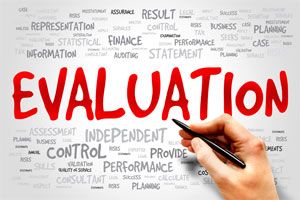What types of data should we track?
WHY IS DATA SO IMPORTANT?

In short, data tells your story. It speaks to your past, present, and future. Not only those, but your successes, failures, and the path in between. It has the ability to be your biggest advocate when used correctly, like an ace in your pocket.
Data improves decision-making. With data, you can get a pulse on where you are at and where you need to go. When you use it well, it creates trust and credibility. When you cultivate trust and credibility, you retain, regain, and find new donors.
According to a 2014 study conducted by NTEN, 75% of nonprofits collect data to report back to funders, while another 75% said they do it for program evaluation purposes, which is often a funding requirement or a way to attract new funding. Seventy-one percent of funders now require some element of outcomes reporting, and 39% of nonprofits experienced an increase in requested measurements from funders (Nonprofit Finance Fund, 2015).
The trend of more funders requiring outcomes and output measurements is anticipated to steadily increase. Funders, both foundations and donors, want to give to reputable organizations that will not waste their money. Foundations, in particular, are focused on impact and effectiveness, so they are looking for those who are forward-thinking in their approaches and who provide more information with regards to their activities and outreach (Hope Consulting, 2011).
You may be fine right now with doing what you are doing (although with no true sense whether or not you are making a difference), but if growth and foundation or federal funding is in your plan, you will need to strongly consider implementing an outcomes (proof of effectiveness) framework now.
WHAT TYPES OF DATA CAN NONPROFITS TRACK?
Within the nonprofit realm, there are generally four categories of data that must be considered. Not everything listed are initial must-haves, but they are all data points that will help you. Although it is difficult to obtain for the last bucket, be sure to include demographic information when you start collecting data.
-
Operations. We are going to go ahead and assume that you, as a nonprofit, are already collecting the necessary data related to your internal and financial operations as required by the IRS. But in addition to these things, you may want to consider:
- Volunteer hours
- Staff training hours
-
Outreach.Outreach data refers to the data around your fundraising, communications, and marketing. Because nonprofits are reliant on donations, collecting data around your donors is vital.
- Donor growth, year over year
- Donation growth
- Average gift size growth
- Donor retention rate
- Pledge fulfillment percentage
- Recurring gift percentage
- Return on investment
- Online gift percentage
- Events (donor signups after)
- Attrition rate
- Gains/losses
- Donor lifetime value
- Transaction frequency
- Donor satisfaction/commitment/trust
- Exit polling
- Number/category of complaints
- Facebook ‘likes’
- Retweets
- Bounce rates
- Page views (social media pages as well as website)
- Page shares
- Thank you pages
- Downloadable resources
- Newsletter sign-ups
- Event attendance
- Website optimization
- Landing pages that lead to the most conversions
- Traffic sources that lead to the most conversions
- Pages with the highest exit rate
Donor loyalty can be measured by looking at:
Because we live in an online-world, nonprofits need to monitor their presence and lure online.
Website data can be measured by looking at:
-
Program.Because nonprofits are specifically tasked with social impact, mission effectiveness or fulfillment is a critical area where data should be collected. Nonprofits achieve their mission through the various programs they run, so collecting data around program successes and failures is imperative. Where possible, include a good amount of demographic information with your measurement instruments, so that analysis can help you learn more about your population, as well as project trends.
- Number of people served
- Program deliverables and their dollar value
- Outcomes
- Outside.External data is the data that falls outside of the nonprofit, but is helpful to its function. This data may include data from the government (local, federal, etc.) or topic-specific data provided by research groups.
A QUICK WORD ABOUT DATA MANAGEMENT…
You will want to find a data management system to help you store, track, and organize your data. For outreach data management (fundraising and online presence), there are different kinds of software available. Much of them do the same thing, but their formatting and function differs.
Spend some time filtering through them to find out what works for your nonprofit culture.
Things to think about:
WHAT DO OTHER NONPROFITS TRACK?
According to the State of Nonprofit Data report (NTEN, 2012):
WHAT CHALLENGES MAY WE FACE?
With respect to the most challenges cited by nonprofits in the use and application of data are (NTEN, 2012):
Not listed here but undoubtedly a factor, are the data and reporting requirements set by funders. Sometimes, these requirements can become tedious and may interfere with the actual work of your nonprofit, but they can also be the very thing that puts the right tracking elements in place for you. If you are interesting in growing, you will have to seek out new funding sources, but in doing so, new expectations are brought in.
No doubt, starting down the data road will have its challenges. Trying to navigate the waters without any training or background could feel intimidating and potentially cause a stalemate. Though it cost you something upfront, it is highly suggested to work with expert consultants to figure out your plan, determine your starting points, obtain training, and have a soundboard for troubleshooting. This will not always be the case, but it’s a good practice for starting off on the right foot. In doing so, you also put your stakeholders’ minds at rest, as they 1) can get a grasp of what to expect of the next time period and 2) see you are taking this step seriously.
CAN YOU COLLECT TOO MUCH DATA?
Absolutely. If there is no real intention to use the data to make decisions, you’ve collected too much. Honestly, if there’s no intention to use data, you really shouldn’t even bother. In reality, it is a balancing act of how much data to capture, so you need to identify what is important to you and then put something in place to track it. Don’t get caught in the trap of “it would be interesting or nice to know…”
WHAT DO WE DO NOW
Step back and consider what your 5 and 10 year organization growth goals are and then:- As an organization, decide what you want to know. Ask specific questions. Make sure everything is aligned with your mission.
- Identify the kinds of data that may help you get to your growth goals – is it donor or program data (or a mix of both)?
- Work with an expert on building your data plan. Be sure that this individual/group has your best interest at heart. If they don’t listen or can’t understand your dynamics, find another one. If they don’t or can’t break things down into palatable steps, find another one. You need an advocate.
- Get your team on board by helping them understand how it will help them.
- Look at your low-hanging fruit, and start there. You don’t always have to start with outcomes.
- Document your process in easy-to-understand terms and steps, so that it is replicable.
- Build a plan for how to integrate more data tracking.
- Celebrate the small wins across your organization. Show your successes.
Understand that data must be used over time (you can’t just measure once) in order to use it well.
Sources
From “A Few Good Tools: Low Cost Consistuent Databases,” IdealWare, URL: http://www.idealware.org/articles/fgt_low_cost_dbs.php
From “Collected Voices: Data-Informed Nonprofits,” NTEN, URL: http://www.nten.org/article/collected-voices-data-informed-nonprofits/
From “Money For Good II: Driving Dollars to the Highest-Performing Nonprofits,” Hope Consulting, URL: http://www.guidestar.org/ViewCmsFile.aspx?ContentID=4038
From “State of the Sector Survey,” Nonprofit Finance Fund 2015, URL: http://survey.nonprofitfinancefund.org/
From “State of Nonprofit Data, 2012,” NTEN, URL: http://www.nten.org/article/the-2012-state-of-nonprofit-data-report/
From “Quick-Start Guide to Data Success for Nonprofits,” Network for Good, URL: http://www.networkforgood.com/nonprofitblog/quick-start-guide-data-success-nonprofits/
From “The Data Every Nonprofit Should Be Tracking,” NonprofitHub. Url: http://nonprofithub.org/nonprofit-technology/the-data-every-nonprofit-should-be-tracking/
From “Website Data Nonprofits Should Track,” Wired Impact, URL: http://wiredimpact.com/blog/website-data-nonprofits-should-track/
From “3 Kinds of Data That Actually Matter to Nonprofits,” NonprofitHub. Url: http://nonprofithub.org/nonprofit-marketing-plan/best-ways-for-nonprofits-to-use-data/
From “7 Donor Loyalty Metrics Every Nonprofit Should Track,” Bloomerang Company Blog, URL: https://bloomerang.co/blog/7-donor-loyalty-metrics-every-nonprofit-should-track/
From “9 Key Performance Indicators Every Nonprofit Should Be Tracking,” Top Nonprofits, URL: https://topnonprofits.com/9-key-performance-indicators-every-nonprofit-should-be-tracking/


